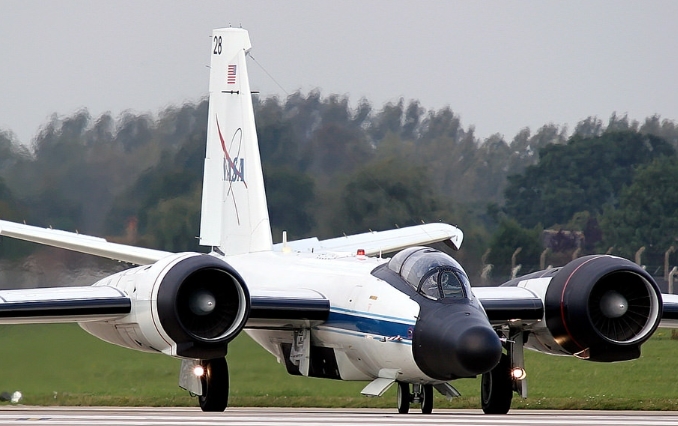NASA’s WB-57 Jets to Chase Total Solar Eclipse for Scientific Studies
NASA is gearing up for the upcoming total solar eclipse when the moon’s shadow will traverse a vast swath of North America. To capture this rare celestial event, the space agency will deploy two of its specialized WB-57 jet planes, equipped with state-of-the-art instruments, to track the eclipse and conduct scientific studies of the Sun’s outer atmosphere, known as the corona.
Objectives of the Eclipse Mission
The primary goal of NASA’s eclipse mission is to unravel the mysteries surrounding the Sun. By studying the corona during the eclipse, scientists hope to:
- Gain insights into the structure and temperature of the corona
- Understand how the Sun influences Earth’s ionosphere
- Potentially detect hidden asteroids that are usually obscured by the Sun’s glare
Lead researcher Bharat Kunduri, a research assistant professor at Virginia Tech in Blacksburg, Virginia, emphasised the unique opportunity presented by the eclipse, stating, “The eclipse basically serves as a controlled experiment. It gives us an opportunity to understand how changes in solar radiation can impact the ionosphere, which can in turn impact some of these technologies like radar and GPS that we rely on in our daily lives.”
The WB-57 Jets
The WB-57 is a highly modified version of the B-57 Canberra bomber, capable of reaching altitudes up to 60,000 feet (18,300 meters) and speeds of 760 km/h (470 mph). These high-altitude research aircraft are well-suited for scientific missions due to their ability to fly above most of the Earth’s atmosphere and weather.
For the eclipse mission, the WB-57 jets will:
- Fly at altitudes exceeding 50,000 feet, above cloud cover and atmospheric particles
- Capture high-resolution images of the corona in both visible and infrared light
- Coordinate their flight paths and timing to maximize the duration of totality observations
Shadia Habbal, a researcher at the University of Hawaii, explained, “By extending the duration of totality, we’re increasing the duration of how much data we can acquire. This light is our best probe short of sticking a thermometer in the corona.”
Totality and the Path of the Eclipse
“Totality” refers to the brief period during a total solar eclipse when the Moon completely obscures the Sun’s disk, allowing the corona to be visible. This spectacular phenomenon will be observable from within the 185 km-16,000 km wide “path of totality” that will traverse parts of Mexico, the United States, and Canada on April 8, 2024.
To experience totality, observers must be located within this path, and the duration of totality will vary depending on the observer’s location. The WB-57 jets will strategically position themselves along the path of totality to maximize their observation time, potentially extending the typical totality duration of around 4 minutes and 27 seconds by approximately 25%, resulting in roughly 6 minutes and 22 seconds of precious observation time.
Significance of the Eclipse Mission
NASA’s eclipse mission holds great scientific value, as it allows researchers to study the Sun’s corona in unprecedented detail. The corona, which extends millions of kilometers into space, is significantly hotter than the Sun’s surface, reaching temperatures of over 1 million degrees Celsius (1.8 million degrees Fahrenheit). Understanding the mechanisms behind this anomalous heating is one of the primary objectives of solar physics.
Further, the eclipse observations will contribute to our understanding of how the Sun’s activity influences Earth’s ionosphere, a region of the upper atmosphere that plays a crucial role in radio communication and satellite navigation systems like GPS.
The potential detection of near-Earth asteroids during the eclipse is another exciting prospect, as these objects are typically difficult to observe due to the Sun’s glare. By taking advantage of the brief window of darkness during totality, astronomers may discover previously unknown asteroids that could pose a threat to Earth in the future.
Month: Current Affairs - April, 2024
Category: Science & Technology Current Affairs







